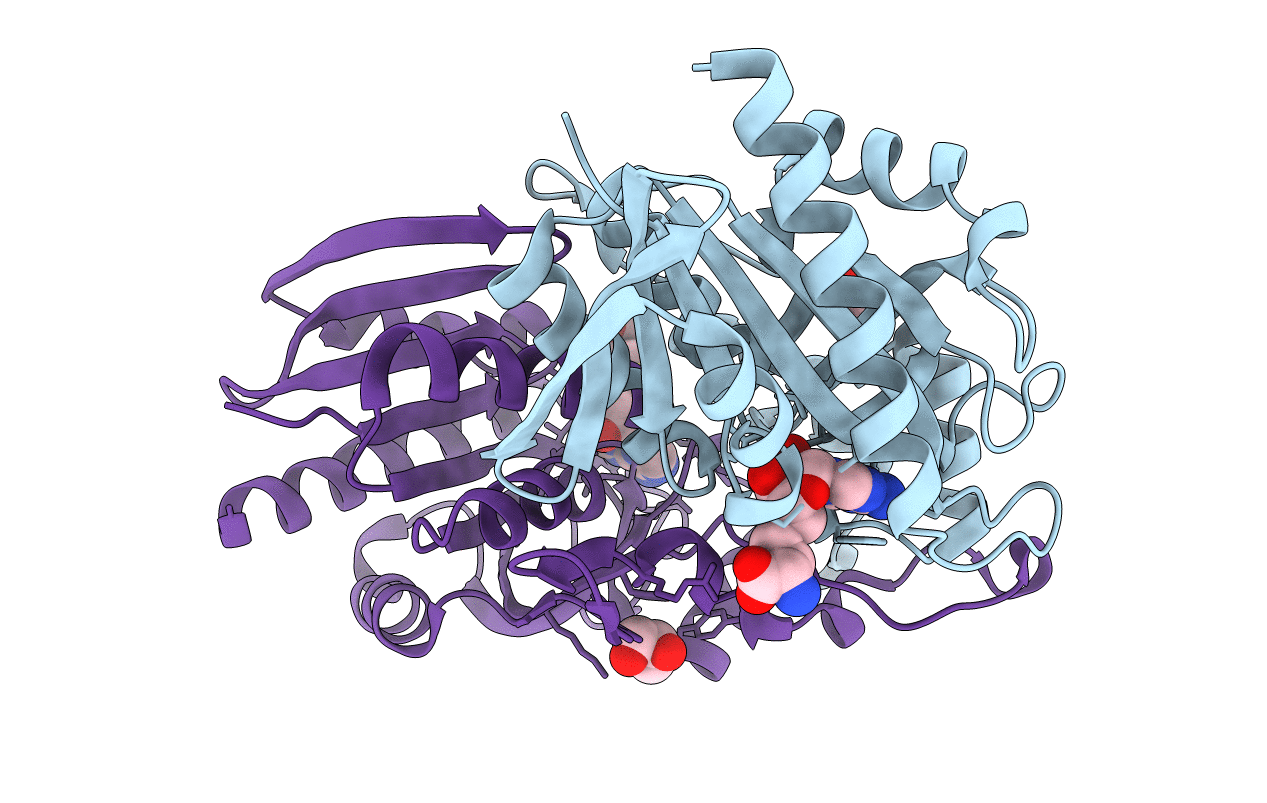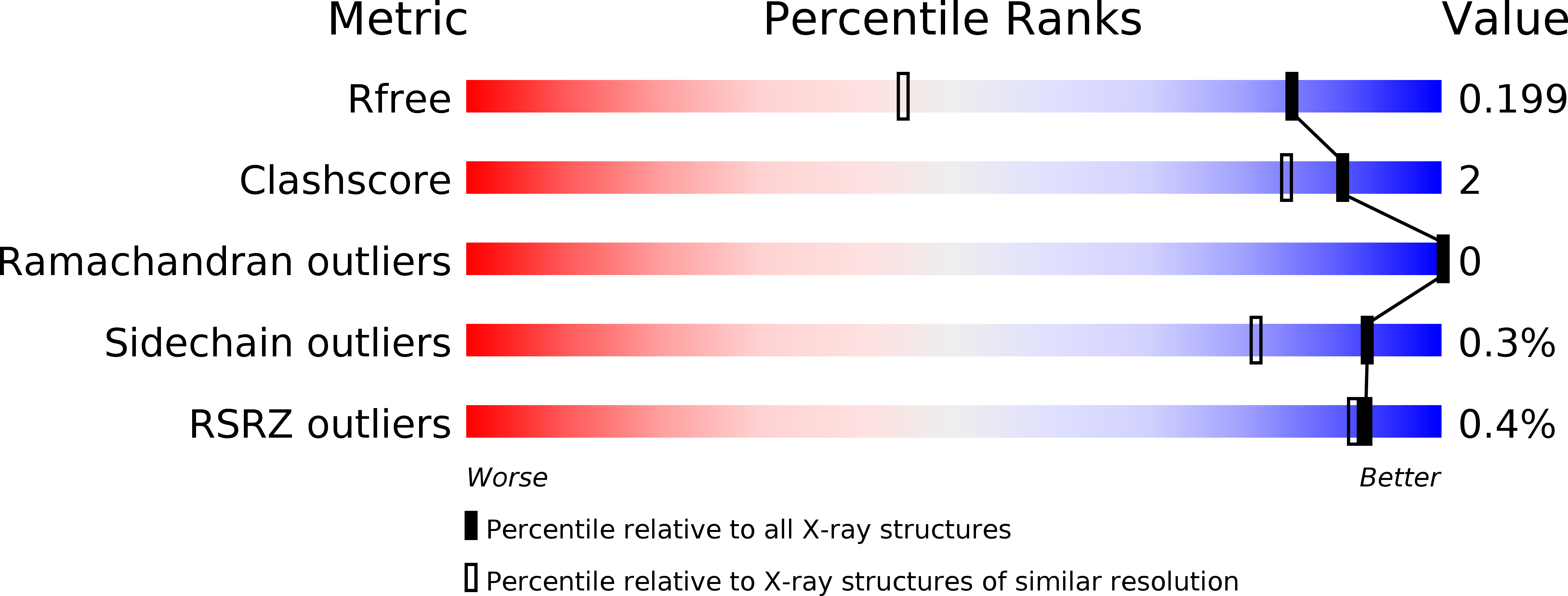
Deposition Date
2016-06-08
Release Date
2016-12-21
Last Version Date
2024-03-20
Entry Detail
PDB ID:
5B7N
Keywords:
Title:
Crystal structure of periplasmic 5-methylthioadenosine/S-adenosylhomocysteine nucleosidase from Aeromonas hydrophila
Biological Source:
Source Organism:
Aeromonas hydrophila (Taxon ID: 380703)
Host Organism:
Method Details:
Experimental Method:
Resolution:
1.40 Å
R-Value Free:
0.19
R-Value Work:
0.17
R-Value Observed:
0.17
Space Group:
P 31 2 1


